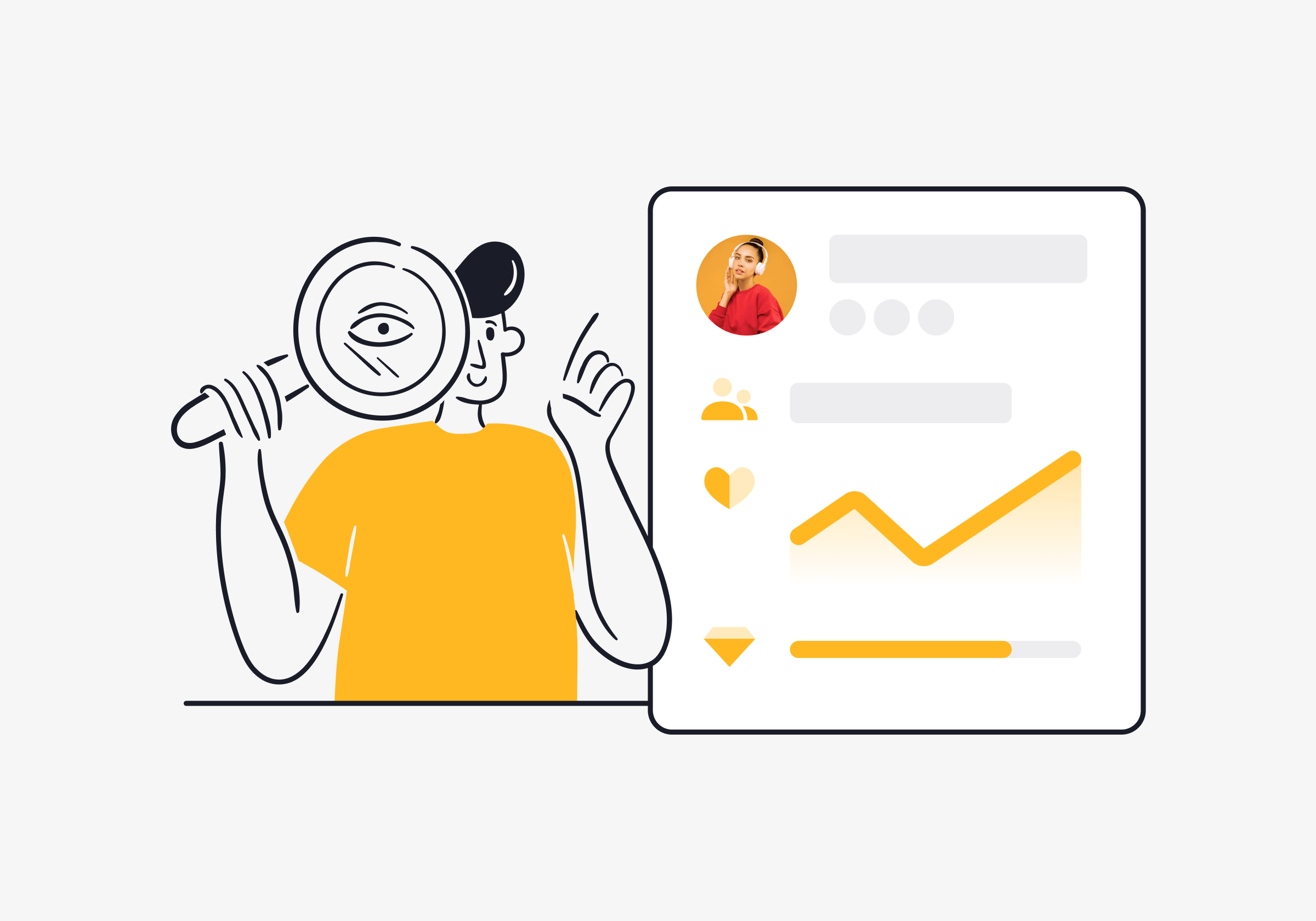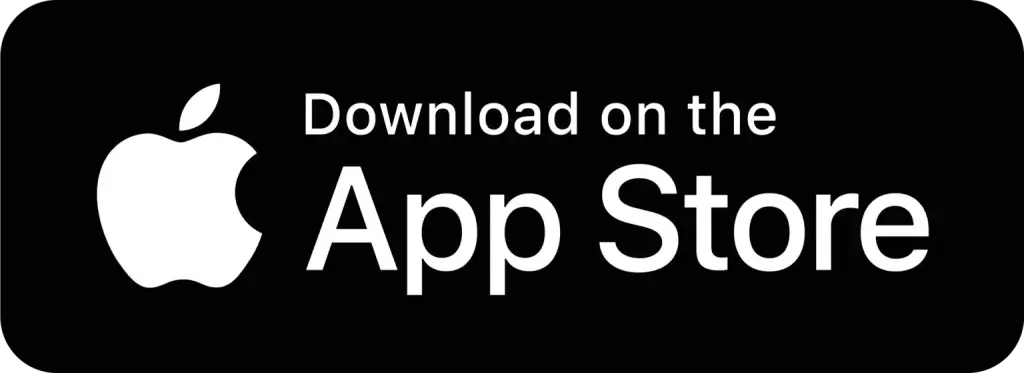Choosing the right influencers is crucial for successful campaigns. This guide will provide essential data diligence tips to help you identify genuine and trustworthy creators.
In the dynamic world of influencer marketing, the authenticity and relevance of influencers can make or break your campaigns. At indaHash, we emphasize the importance of thorough data diligence to ensure the influencers you partner with are both genuine and effective. Here’s how you can leverage detailed insights and analytics to make informed decisions when selecting influencers for your marketing efforts.
Step 1.
Check Audience Credibility
The credibility of an influencer’s audience is a paramount factor. This parameter determines how reliable and engaged the users following an influencer are. High audience credibility means the followers are real and genuinely interested in the content. Here are some red flags indaHash is analyzing for you:
No Profile Photo or Bio
Accounts that lack basic personal information but engage excessively are suspicious. For example, an account that likes 50-100 posts per day without a profile picture or bio is likely not credible.
Lopsided Following and Liking Patterns
An account that follows no one but likes all posts from a select few individuals or an account that has posted 100 comments in a day on multiple days without having a bio or posts.
Activity with No Content
Profiles that have been active for months but have no photos and have liked 500+ posts per day.
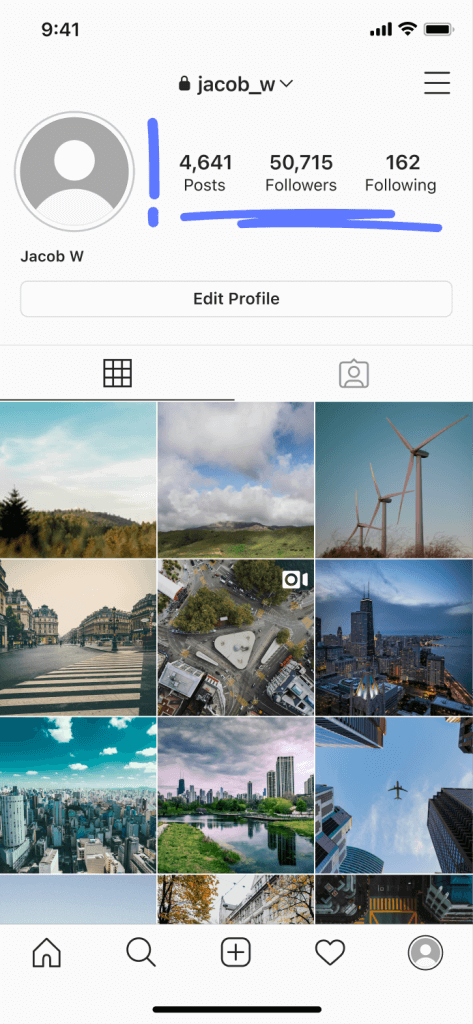
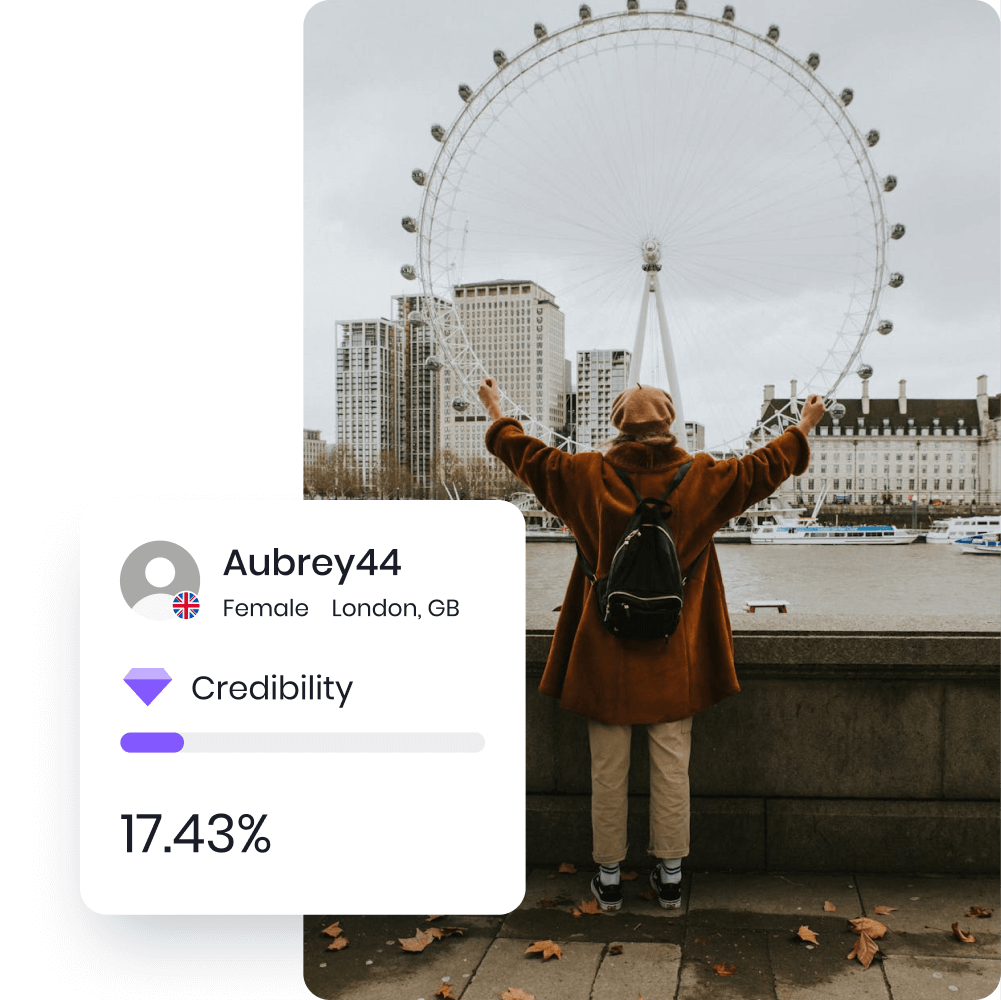
These indicators suggest that the account might be a bot or a fake profile, and high engagement from such accounts can falsely inflate an influencer’s perceived reach and impact.
Credibility Score for Influential Creators:
60% - Good
Ensures enough credibility for brand safety during campaigns.
70% - Very Good
Represents a good quality follower base compared to the industry average.
80% - Excellent
Indicates higher quality followers compared to the industry average.
90% - Exceptional
Represents exceptional quality of followers.
Step 2.
Analyze Creator Growth Graph
A growth graph shows the trend of an influencer’s follower count over time. By examining this graph, you can detect unusual spikes or drops in followers. Such changes could indicate suspicious activities like purchasing followers or involvement in controversies that caused a mass unfollowing. Consistent, organic growth is a sign of a healthy and credible influencer profile.
Sudden Spikes
Large, sudden increases in followers can suggest artificial inflation through purchased followers.
Sharp Drops
Significant drops in followers might indicate that the influencer has been involved in negative publicity or that fake accounts are being purged.

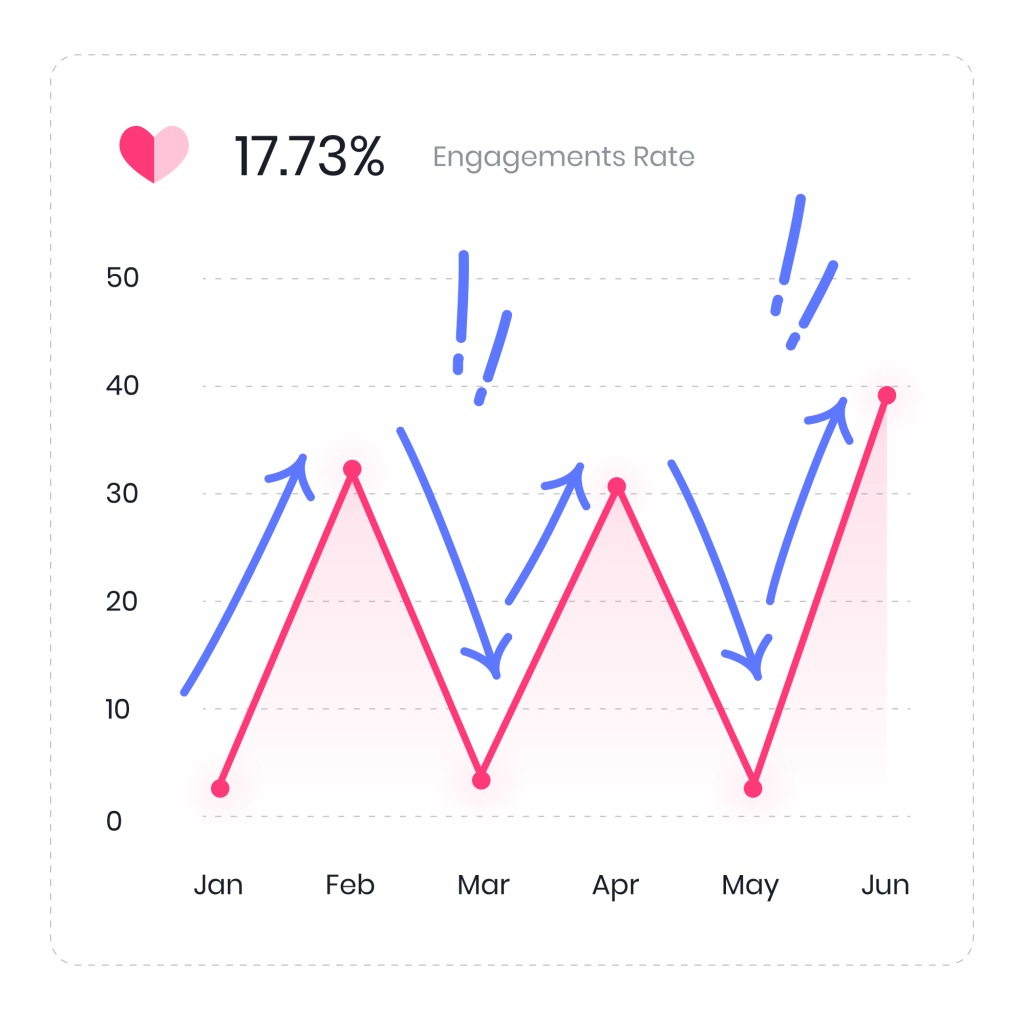
Step 3.
Review Engagement Rate Graph
Engagement rate (ER) is a critical metric that reflects how actively followers interact with an influencer’s content. Monitoring the ER graph helps in identifying unusual patterns.
Consistent Engagement
Look for steady engagement rates which signify a loyal and interested audience.
Fluctuations
Sudden peaks or troughs in the engagement rate can suggest manipulative practices like engagement pods or purchased likes and comments.
Step 4.
Examine Geographical Reach
Understanding where an influencer’s followers are located can provide insights into their relevance for your target market. Check the geographical reach of the audience and be wary of followers from unexpected or irrelevant regions.
Unusual Locations
Followers from countries that do not align with the influencer’s content or your target market can be a red flag. For example, if an influencer based in the US has a significant number of followers from a country with no apparent connection to their content, it might indicate purchased followers.

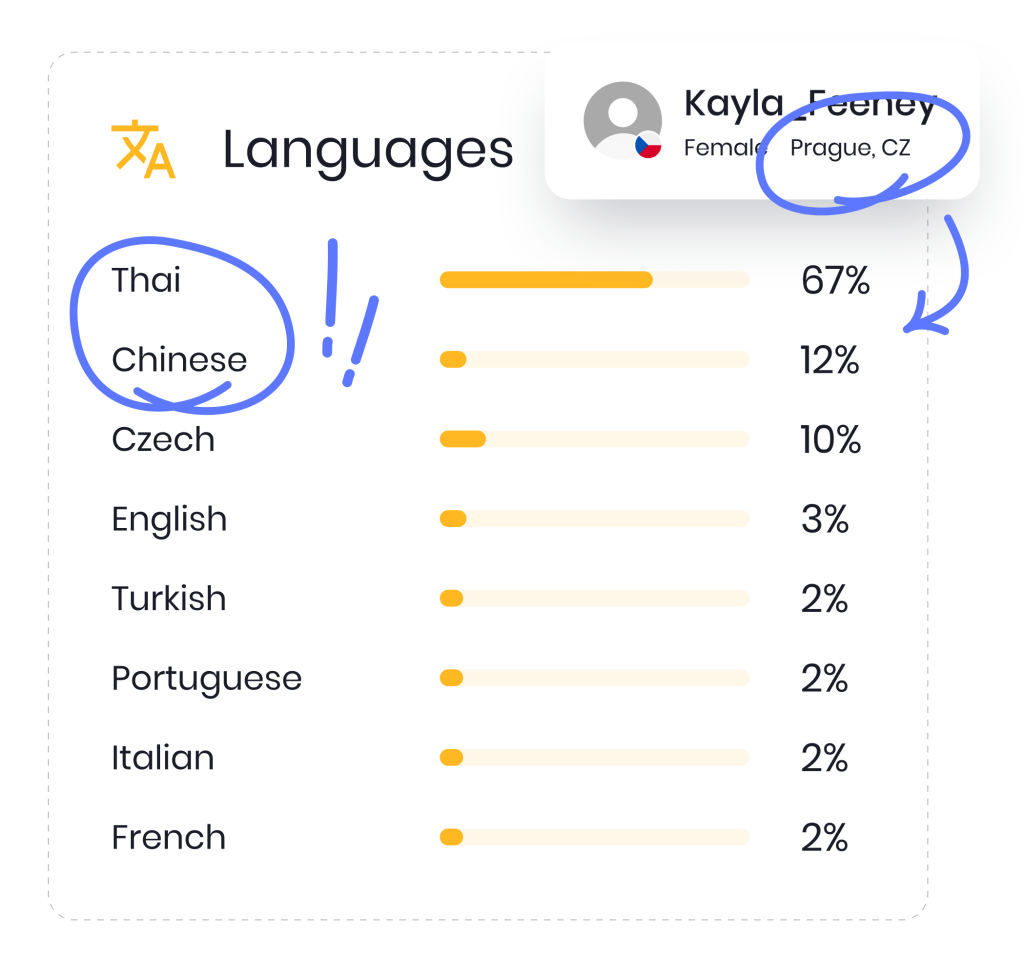
Step 5.
Assess Audience Languages
The languages spoken by an influencer’s audience should align with your target demographics. Analyze the primary languages of the followers to ensure they match the intended audience for your campaign.
Inconsistent Languages
If an influencer’s audience predominantly speaks a language that doesn’t correlate with the content or the influencer’s stated location, this could indicate a non-organic following.
Step 6.
Compare Engagement Rates on Recent Posts
A closer look at the engagement rates on the last three posts compared to the influencer’s average ER can reveal a lot about their current relevance and engagement level.
Discrepancies
If the recent posts have significantly lower or higher engagement rates compared to the average, it’s worth investigating. This could be due to various factors such as recent changes in content quality, algorithm updates, or even temporary boosts from paid engagements.
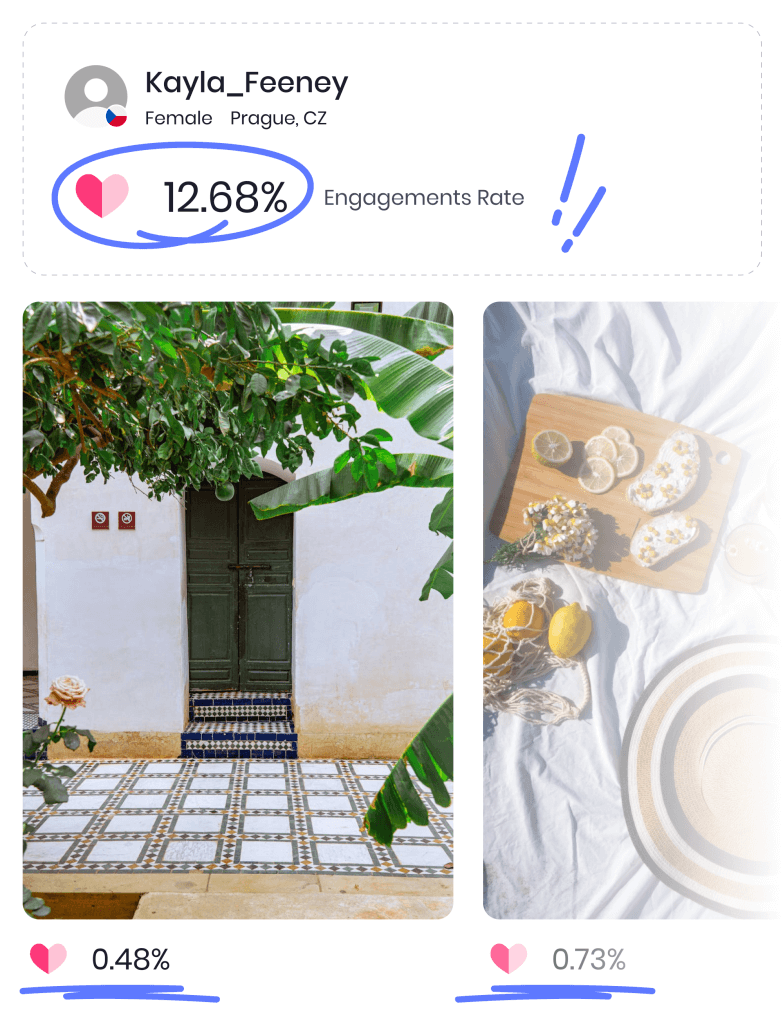
By following these steps, you can ensure that your influencer marketing campaigns are based on solid data and genuine audience interactions. At indaHash, our advanced tools and analytics help you perform this due diligence seamlessly, ensuring that your chosen influencers can truly drive impactful and authentic engagement.
Leveraging these insights not only helps in selecting the right influencers but also safeguards your brand from the pitfalls of engaging with inauthentic profiles. With the right data diligence, your campaigns can achieve higher trust, better ROI, and meaningful connections with your target audience.
